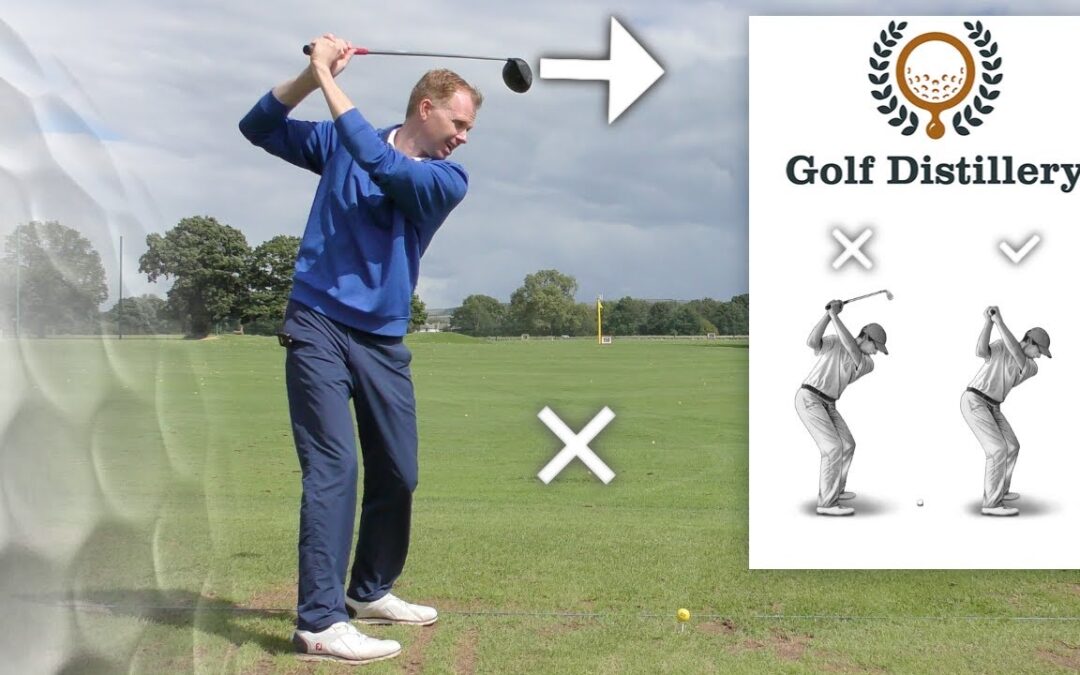– The concept of having
the club across the line really relies on the
fact we've established what the line is. So the line is our ball
to intended target. So I've got my ball
here, my intended target, the 200-yard marker out there. And we imagine that everything is pointing in that direction. Almost like a set of train tracks, one for the ball the
target, one for my feet. That's my on-line target line. Then consider what across the line means. Across the line refers
to the angle of the shaft at the top of the backswing in relation to those train lines On line would be pointing
where I wanted to go. Laid off is pointing to the left for the right-handed golfer
and across the line is here. So the club points across
my intended target line. Often happens in relation
with an over swing.
So if a golfer has the
club swinging too far back, we often see that the club
is long and across the line at the same times, it often relates to poor
arm and shoulder structure during the backswing. So if in a backswing, a golfer gets quite handsy, quite wristy lifts the rear elbow too high, rear elbows up here. This structure is not
very clean, not very good. And the club is therefore across the line. From this position, often golfers will come outside the line on the way back too long too wristy, too arms-y outside the line on the way down and across
the back of the ball.
So often golfers that have long over swings that get across the line. Also couple that with being outside the line on the way down traditional sort of pull-y,
slice-y kind of nastiness. Couple of things I'd like
you to work on really to focus on is making
sure that you're on-line in two previous checkpoints
during the backswing. Because if you're across
the line at the top chances are you didn't just become across
the line at the top. You were probably inside the line earlier. So inside the line would be here. Now, can you see how this
club is already setting us up to be across the line at the top? If I hit this and that club shoots up and goes that way across the line. You can imagine if my club
was outside the line here and I hit this end, it would pop this way. So if I get inside the line early chances are I'm going to be
across the line at the top. So the first checkpoint
coming back is here.
Make sure the club points
straight at the camera or straight at a mirror
that would be behind me. Second checkpoint is this point
when my left arm is parallel to the ground, I want to
check that my left hand my lead hand as a right-hand golfer is in the center of my chest. So again, a mirror or where that camera is checking
that's in a good position. And the shaft should point largely down towards the golf ball or at least the ball at the target line.
If the club was in here or up here it's probably going to
cause me problems getting into a good position at the top. So we've got good checkpoint
here at hip level. Good checkpoint here at halfway left arm horizontal to the ground, turn to the top. And then at this point,
if you're slightly short of the horizontal, you should
also be pointing slightly to the left side. That allows the club end to sit at full length, perfectly down the target line delivered back down through the two previous checkpoints and on-line through the
back of the golf ball. You can also double-check
this from the front on through to the camera or the mirror
been positioned this way. One, two, three to the top, rather than getting inside and then
long and across the line. If you can get rid of your
across the line golf swing you'll be able to retain
a lot more control of your downswing and
ultimately a lot more control of how your golf ball flies.

